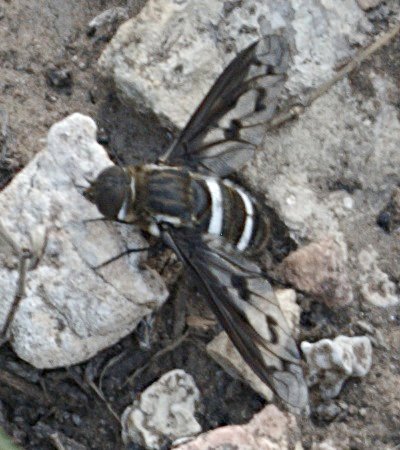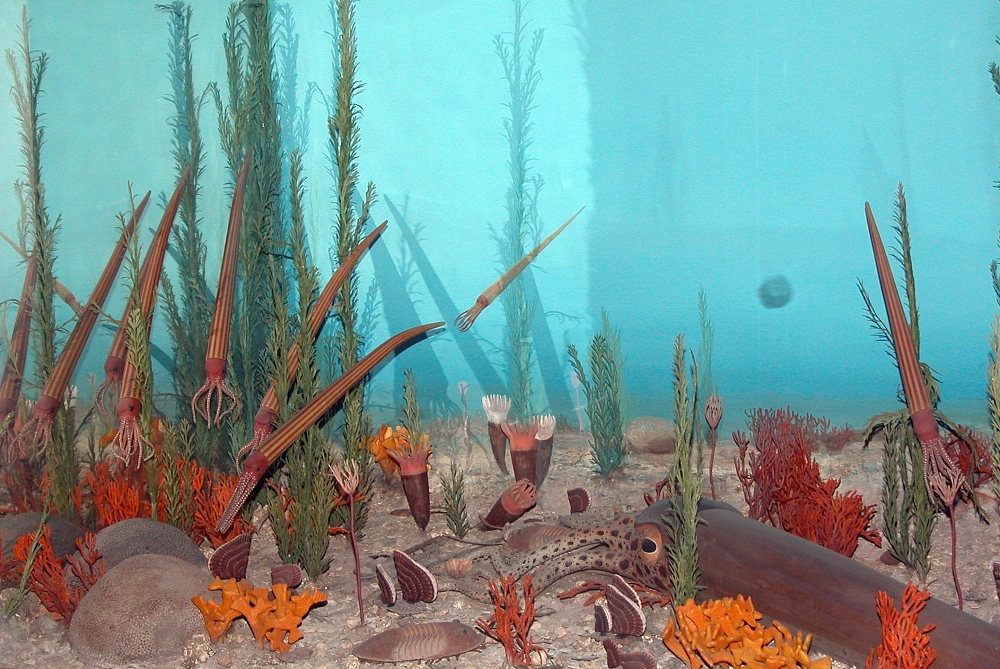|
Gangshanoceras
''Gangshanoceras'' is a fossil nautiloid cephalopod genus included in the orthocerid family Proteoceratidae Proteoceratidae is an extinct family of actively mobile aquatic carnivorous cephalopods belonging to the subclass Orthoceratoidea endemic to what would be Asia, Australia, Europe, South America and North America during the Ordovician living fro .... It has been found in Ordovician rocks dated from about 478.5 to 468 Ma in China, and from rocks dated slightly younger, about 468 to 461 Ma in Argentina. It has five described species. The type is ''Gangshanoceras jurongense''. References Orthoceratoidea Ordovician cephalopods Fossils of China Fossil taxa described in 1988 {{paleo-cephalopod-stub ... [...More Info...] [...Related Items...] OR: [Wikipedia] [Google] [Baidu] |
Proteoceratidae
Proteoceratidae is an extinct family of actively mobile aquatic carnivorous cephalopods belonging to the subclass Orthoceratoidea endemic to what would be Asia, Australia, Europe, South America and North America during the Ordovician living from 490—445.6 Ma, existing for approximately . Taxonomy Proteoceratidae was named by Flower (1962). Its type is '' Proteoceras''. It was assigned to Michelinoceratida by Flower (1962); to Pseudorthocerataceae by Teichert et al. (1964), Sweet (1964) and Evans (1994); to Pseudorthocerida by Kröger and Isakar (2006); and to Orthocerida Orthocerida is an order of extinct Orthoceratoid cephalopods also known as the Michelinocerida that lived from the Early Ordovician () possibly to the Late Triassic (). A fossil found in the Caucasus suggests they may even have survived until ... by Kröger et al. (2007). B. Kröger, M. S. Beresi, and E. Landing. 2007. Early orthoceratoid cephalopods from the Argentine Precordillera (Lower-Middle O ... [...More Info...] [...Related Items...] OR: [Wikipedia] [Google] [Baidu] |
Ordovician
The Ordovician ( ) is a geologic period and System (geology), system, the second of six periods of the Paleozoic Era (geology), Era. The Ordovician spans 41.6 million years from the end of the Cambrian Period million years ago (Mya) to the start of the Silurian Period Mya. The Ordovician, named after the Celtic Britons, Welsh tribe of the Ordovices, was defined by Charles Lapworth in 1879 to resolve a dispute between followers of Adam Sedgwick and Roderick Murchison, who were placing the same Rock (geology), rock beds in North Wales in the Cambrian and Silurian systems, respectively. Lapworth recognized that the fossil fauna in the disputed Stratum, strata were different from those of either the Cambrian or the Silurian systems, and placed them in a system of their own. The Ordovician received international approval in 1960 (forty years after Lapworth's death), when it was adopted as an official period of the Paleozoic Era by the International Union of Geological Sciences, Intern ... [...More Info...] [...Related Items...] OR: [Wikipedia] [Google] [Baidu] |
Undescribed Taxon
In taxonomy, an undescribed taxon is a taxon (for example, a species) that has been discovered, but not yet formally described and named. The various Nomenclature Codes specify the requirements for a new taxon to be validly described and named. Until such a description has been published, the taxon has no formal or official name, although a temporary, informal name is often used. A published scientific name may not fulfil the requirements of the Codes for various reasons. For example, if the taxon was not adequately described, its name is called a '' nomen nudum''. It is possible for a taxon to be "undescribed" for an extensive period of time, even if unofficial descriptions are published. An undescribed species may be referred to with the genus name, followed by "sp"., but this abbreviation is also used to label specimens or images that are too incomplete to be identified at the species level. In some cases, there is more than one undescribed species in a genus. In this case, th ... [...More Info...] [...Related Items...] OR: [Wikipedia] [Google] [Baidu] |
Nautiloid
Nautiloids are a group of marine cephalopods ( Mollusca) which originated in the Late Cambrian and are represented today by the living ''Nautilus'' and ''Allonautilus''. Fossil nautiloids are diverse and speciose, with over 2,500 recorded species. They flourished during the early Paleozoic era, when they constituted the main predatory animals. Early in their evolution, nautiloids developed an extraordinary diversity of shell shapes, including coiled morphologies and giant straight-shelled forms ( orthocones). Only a handful of rare coiled species, the nautiluses, survive to the present day. In a broad sense, "nautiloid" refers to a major cephalopod subclass or collection of subclasses (Nautiloidea ''sensu lato''). Nautiloids are typically considered one of three main groups of cephalopods, along with the extinct ammonoids (ammonites) and living coleoids (such as squid, octopus, and kin). While ammonoids and coleoids are monophyletic clades with exclusive ancestor-descendant rel ... [...More Info...] [...Related Items...] OR: [Wikipedia] [Google] [Baidu] |
Cephalopod
A cephalopod is any member of the molluscan class Cephalopoda (Greek plural , ; "head-feet") such as a squid, octopus, cuttlefish, or nautilus. These exclusively marine animals are characterized by bilateral body symmetry, a prominent head, and a set of arms or tentacles (muscular hydrostats) modified from the primitive molluscan foot. Fishers sometimes call cephalopods "inkfish", referring to their common ability to squirt ink. The study of cephalopods is a branch of malacology known as teuthology. Cephalopods became dominant during the Ordovician period, represented by primitive nautiloids. The class now contains two, only distantly related, extant subclasses: Coleoidea, which includes octopuses, squid, and cuttlefish; and Nautiloidea, represented by ''Nautilus'' and ''Allonautilus''. In the Coleoidea, the molluscan shell has been internalized or is absent, whereas in the Nautiloidea, the external shell remains. About 800 living species of cephalopods have been ident ... [...More Info...] [...Related Items...] OR: [Wikipedia] [Google] [Baidu] |
Orthocerida
Orthocerida is an order of extinct Orthoceratoid cephalopods also known as the Michelinocerida that lived from the Early Ordovician () possibly to the Late Triassic (). A fossil found in the Caucasus suggests they may even have survived until the Early Cretaceous (). They were most common however from the Ordovician to the Devonian. Shell form The shell is usually long, and may be straight ("orthoconic") or gently curved. In life, these animals may have been similar to the modern squid, except for the long shell. The internal structure of the shell consists of concavo-convex chambers linked by a centrally-placed tube called a siphuncle. There is a tendency for the chambers to develop cameral deposits, which were used as ballast to balance the long gas-filled shell. Depending on the family, the siphuncle has orthochoanitic (short and straight) or cyrtochoanitic (outwardly curved) septal necks, which protrude from the septa. The shell surface may be (depending on the specie ... [...More Info...] [...Related Items...] OR: [Wikipedia] [Google] [Baidu] |
Ordovician Rocks
The Ordovician ( ) is a geologic period and system, the second of six periods of the Paleozoic Era. The Ordovician spans 41.6 million years from the end of the Cambrian Period million years ago (Mya) to the start of the Silurian Period Mya. The Ordovician, named after the Welsh tribe of the Ordovices, was defined by Charles Lapworth in 1879 to resolve a dispute between followers of Adam Sedgwick and Roderick Murchison, who were placing the same rock beds in North Wales in the Cambrian and Silurian systems, respectively. Lapworth recognized that the fossil fauna in the disputed strata were different from those of either the Cambrian or the Silurian systems, and placed them in a system of their own. The Ordovician received international approval in 1960 (forty years after Lapworth's death), when it was adopted as an official period of the Paleozoic Era by the International Geological Congress. Life continued to flourish during the Ordovician as it did in the earlier Cambrian Peri ... [...More Info...] [...Related Items...] OR: [Wikipedia] [Google] [Baidu] |
Orthoceratoidea
Orthoceratoidea is a major subclass of nautiloid cephalopods. Members of this subclass usually have orthoconic (straight) to slightly cyrtoconic (curved) shells, and central to subcentral siphuncles which may bear internal deposits. Orthoceratoids are also characterized by dorsomyarian muscle scars (a small number of large scars concentrated at the top of the body chamber), extensive cameral deposits, and calciosiphonate connecting rings with a porous and calcitic inner layer. Currently, Orthoceratoidea comprises the orders Riocerida, Dissidocerida, Actinocerida, Pseudorthocerida, Lituitida and Orthocerida. Orthocerida is a noteworthy paraphyletic order which is ancestral to the major cephalopod groups such as the extinct ammonoids and living coleoids (cephalopods without external shells, including squids, octopus, cuttlefish, etc.). Taxonomy As a superorder, Orthoceratiodea was one of six superorders within the Nautiloidea, the others being the Plectronoceratoidea (= Ellesm ... [...More Info...] [...Related Items...] OR: [Wikipedia] [Google] [Baidu] |
Ordovician Cephalopods
The Ordovician ( ) is a geologic period and system, the second of six periods of the Paleozoic Era. The Ordovician spans 41.6 million years from the end of the Cambrian Period million years ago (Mya) to the start of the Silurian Period Mya. The Ordovician, named after the Welsh tribe of the Ordovices, was defined by Charles Lapworth in 1879 to resolve a dispute between followers of Adam Sedgwick and Roderick Murchison, who were placing the same rock beds in North Wales in the Cambrian and Silurian systems, respectively. Lapworth recognized that the fossil fauna in the disputed strata were different from those of either the Cambrian or the Silurian systems, and placed them in a system of their own. The Ordovician received international approval in 1960 (forty years after Lapworth's death), when it was adopted as an official period of the Paleozoic Era by the International Geological Congress. Life continued to flourish during the Ordovician as it did in the earlier Cambr ... [...More Info...] [...Related Items...] OR: [Wikipedia] [Google] [Baidu] |
Fossils Of China
A fossil (from Classical Latin , ) is any preserved remains, impression, or trace of any once-living thing from a past geological age. Examples include bones, shells, exoskeletons, stone imprints of animals or microbes, objects preserved in amber, hair, petrified wood and DNA remnants. The totality of fossils is known as the ''fossil record''. Paleontology is the study of fossils: their age, method of formation, and evolutionary significance. Specimens are usually considered to be fossils if they are over 10,000 years old. The oldest fossils are around 3.48 billion years old to 4.1 billion years old. Early edition, published online before print. The observation in the 19th century that certain fossils were associated with certain rock strata led to the recognition of a geological timescale and the relative ages of different fossils. The development of radiometric dating techniques in the early 20th century allowed scientists to quantitatively measure the absolute ... [...More Info...] [...Related Items...] OR: [Wikipedia] [Google] [Baidu] |

.jpg)

